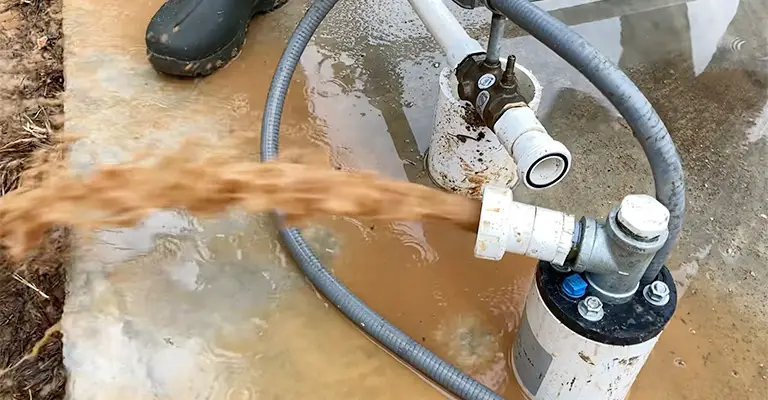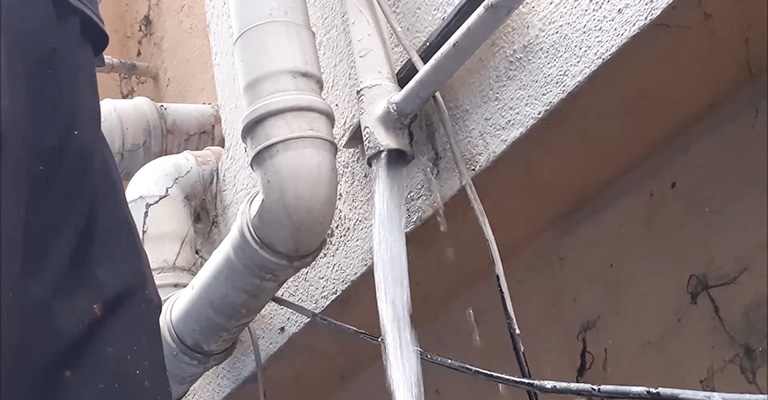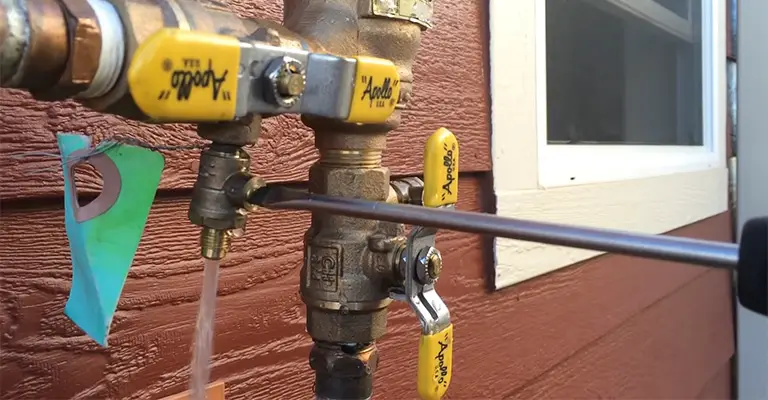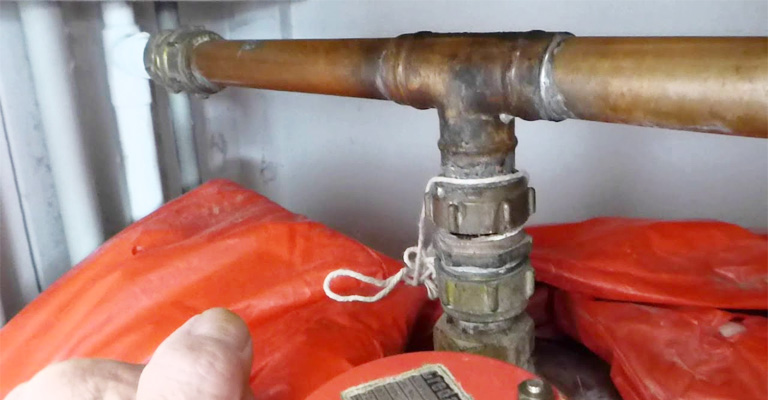Clean water is essential for our daily lives, providing nourishment, hygiene, and overall well-being. Within our homes, a network of water pipes carries this precious resource to our faucets, showers, and appliances.
Over time, these pipes can accumulate mineral deposits, sediments, or even microbial growth, compromising the quality and flow of the water we rely on.
To maintain a healthy and efficient plumbing system, it is crucial to understand how to clean water pipes effectively.
By cleaning your water pipes regularly, you not only safeguard your health but also extend the lifespan of your plumbing system, saving you from potentially costly repairs or replacements down the line.
Reasons to Flush Water Pipes

In your home, you may encounter contaminants when your water main breaks, the water line is repaired, or other issues impact the supply line.
You should flush your water pipes every time the city replaces water mains, flushes their lines, or does any work on the pipes leading to your house.
There is a possibility of polluting your water if sediment is dislodged. This can include rust, lead, and other potentially dangerous contaminants.
You may sometimes notice that your water looks discolored or smells funny, but you can’t figure out why. During that time, flushing the water lines could help resolve the problem.
How To Flush An Entire House Plumbing System?

The following instructions will provide step-by-step instructions on how to thoroughly flush the home’s plumbing system.
For the safety and health of our communities, we recommend that you follow all the steps below carefully when flushing. Thanks for being so cooperative.
NOTE: If your water filters need replacing, flush your system first. The instructions for replacing the filter on any point-of-entry water treatment system, such as a water softener or filter, should be located in the manual.
Flush Hot Water
Ensure all the faucets in your room, including the sink and tub, have hot water running. Spend about 15 minutes letting the water flow from the taps.
Doing this will remove the existing hot water from the tank water heater and then replenish it with fresh water. It’s okay to shut off the hot water taps earlier if you run out of hot water before the 15 minutes are up.
Alternatively, run a garden hose on your water heater to remove sediment. You can work with water more quickly if you turn off your water heater and let it cool down.
You can run your hot water faucet for several minutes to get rid of most of the hot water. You will then need to fit a garden hose to the drain valve at the bottom of the water heater tank.
Place the hose outside, in a utility sink, a floor drain, or another safe drain. Close the drain and let all of the water drain out of the tank after closing the cold water line to the tank.
Once the cold water has drained, turn on the hot water and let it run while you drain the hose until it has become clear and sediment-free. The water heater can now be refilled, and the drain can be closed.
Step-By-Step Instructions

Here are the steps to complete in the order set out below. Before moving on to the next step, complete the previous step altogether.
1. Make sure you flush ALL hot water taps for 15 minutes. Your bathroom(s) must have the hot water taps open to begin the flushing process.
The faucets in all hot water sinks, baths, and showers must be opened. After that, open all other hot water fixtures, such as those in kitchens and wet bars.
You need to run all these hot water fixtures for 15 minutes before you shut down the water. Using your water heater after you have flushed each faucet under the hot water for 15 minutes is safe.
2. Make sure ALL cold water taps are flushed five minutes before using
3. Make sure you flush all remaining cold water taps for at least five minutes. Please see FLUSHING YOUR APPLIANCES for more information before moving on to step 3.
Following a flush of the hot water tank and hot water piping, open ALL cold-water fixtures and flush each toilet at least once. After running these cold-water fixtures for 5 minutes, shut off the water.
Ensure the plumbing system has finished flushing by opening all fixtures, including hose bibs, external faucets, and fixtures not used for drinking, for at least five minutes. Additionally, make sure other appliances are free of water.
How Do I Descale My Water Pipes?

In your home, slow water flow is not something you should tolerate. Your water lines and pipes might be clogged if you notice water trickling out of your faucets or draining slowly from the shower or sink.
85% of the U.S. population lives in areas with hard water, so you are probably also affected if calcium deposits build up in your pipes.
Steps to Descale Your Pipes
- Make sure to fill several pots with hot water for every drain you need to clean.
- Shut off your home’s water supply.
- Shut down the water heater.
- Make sure the pipes are emptied by turning on the faucets. Flush the toilet after the water has run out.
- Be sure to close the faucets.
- Put your drain cleaner in your pipes (more on that later). Make sure to wait the appropriate amount of time for the cleanser to work – a chemical cleanser may work in 15 minutes, whereas a natural cleanser may take an entire day.
- Drain your drains by pouring boiling water down them.
- Bring the water back up to temperature by turning on the water lines and heater.
- Ensure all your faucets are at full blast so that calcium deposits you broke up in your pipes can flow from them.
Natural Cleaners
It is a popular natural solution for breaking up calcium deposits in pipes when vinegar and baking soda are combined. A homemade drain cleaner can be made by mixing vinegar and baking soda together.
Well+Good recently featured some alternative ways to clean drains using pantry staples, including vinegar and water.
Several new cleaners are also on the market that claims to introduce beneficial bacteria into your pipes rather than introducing caustic chemicals to break up clogs, so there are plenty of options to select from.
Water lines must be flushed and turned off before descaling your pipes can be done. If flushing and descaling don’t work, you may need to soak your pipes in a cleaning solution. As a last resort, they’ll need to be replaced.
Chemical Cleaners
Cleaners generally use acids, bleaches, or lye to generate heat and dissolve scale within the pipes. Some common brands include CLR® and Drano®.
It can be convenient to clean with these products, but they come with their own set of problems.
It is hazardous for PVC pipes to be in contact with these chemicals because they are caustic and can soften plastic.
The calcium build-up can eat away at the corrosion, so instead of slowing down the flow, your pipes will become corroded, resulting in a hole.
When using chemical cleaners, take precautions, wear protective clothing, and follow instructions carefully. You cannot use chemical cleaners on a well due to the possibility of chemicals getting into the water supply.
Final Tips
In case your pipes are constantly clogged, you might consider installing a whole-house water softener. In your pipes, calcium build-up is quickly stopped by doing this.
We suggest that you consult with a water softener specialist if you have any questions about determining the right type and size of water softener for your home.
Apart from protecting your pipes, water softeners provide many benefits, including cleaner silverware and glassware, longer-lasting appliances, and softer skin.
Don’t hesitate to ask if you have any concerns about hard water in your home.







